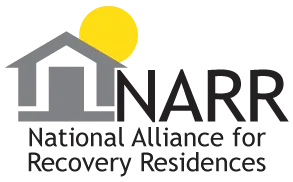Your husband has always been over the top. From the restless nights cramming for the BAR to the endless litigations as he rose to be the top prosecutor in the state, he always was vibrant, full of life, and never seemed to wear down. You admired his dedication and fell in love with his boisterousness, never questioning how he was able to keep his energy level so high.
As the years went on, and two children later, you notice he is not as healthy as he used to be. He is losing weight, looks tired all the time, and he’s been getting nosebleeds almost every other week. When you ask him what is going on, he gets irritated and tells you to leave it alone. He has never acted like this before – what is up with him? You try to look up the symptoms you see in him, and to your surprise, cocaine addiction pops up. Everything fits, but how could he be using cocaine? Were there signs that you missed?
In 2021, 219 non-fatal overdose hospitalizations occurred due to stimulants like cocaine in Pinellas County. At Tranquil Shores, we understand that these situations can easily turn fatal, so we provide a space for those living with a stimulant use disorder to heal. Our facility keeps the client-to-staff ratio low, at 3:1. This ensures all of our clients get the individual attention they need and deserve. Our blog is an excellent resource for family members and friends to understand addiction and what their loved ones may be going through. Today, we are discussing the signs of cocaine addiction, and what to look for in a loved one.
Timeline of Cocaine Addiction Symptoms
Cocaine addiction can begin soon after the first couple of uses. Derived from the coca plant, cocaine is a stimulant that causes a rush of intense pleasure and energy. Usually imported from South America, cocaine comes in a fine, white powder and is snorted, smoked, injected, or swallowed. Cocaine can also come in a hard, crystal-like ball known as crack, which is typically smoked. While there is no set timeline for cocaine addiction symptoms to appear, most people will experience some or all of the most common ones.
Early Signs of Cocaine Addiction
Some early signs of cocaine use disorder can depend on which way the substance is taken. For those who inject cocaine, collapsed veins and abscesses can occur. Infections and the risk of HIV/AIDS and hepatitis increase in those who inject cocaine. When cocaine is snorted, breathing problems as well as nosebleeds and trouble swallowing can happen. In those who swallow it, cocaine can cause mouth sores and bowel damage as it constricts blood flow in the intestines.
Late Signs of Addiction
As cocaine use continues, dependence develops within the brain. Cocaine works in the part of the brain responsible for the reward system. Over time, the brain adjusts to having cocaine and balances chemicals to account for it. When cocaine is taken away, the brain over adjusts, causing symptoms of withdrawal to appear. Cocaine withdrawal symptoms include:
- Depression
- Anxiety
- Increased appetite
- Fatigue
- Insomnia
- Cravings
While withdrawal symptoms are not typically life-threatening, the mental effects can be difficult to manage. Intense cravings and increased depression and anxiety can cause feelings of self-harm, harming others, and suicidal ideation. If any of these symptoms are experienced, seek medical attention immediately.

Cocaine Use Symptoms
When cocaine is first used, it creates feelings of pleasure, intense energy, and focus. Some common signs of cocaine use include:
- Extreme bouts of energy
- Hypersensitivity to sound, sight, and touch
- Paranoia with increased distrust of others
- Mood swings such as happiness or irritability
- Decreased appetite
Physical Signs of Cocaine Use
Cocaine affects the body physically in a number of ways. Malnourishment from loss of appetite can lead to extreme weight loss and a weakened immune system. Coupled with poor sleep habits and lack of self-care, infections can set in and take longer to heal. The nasal cavity can become collapsed and permanently damaged from prolonged cocaine use. Sense of smell may be lost and chronic breathing problems can occur.
A cocaine overdose can happen at any time and can cause damage to vital organs. When the body becomes overwhelmed with the amount of cocaine taken, it cannot process it quickly enough. Cocaine raises blood pressure, heart rate, and temperature, which can lead to serious complications. Common cocaine overdose symptoms include heart attacks, strokes, seizures, increased body temperature, sweating, and chest pain. There is no medication to reverse a cocaine overdose, and medical attention should be sought if an overdose is suspected.
Behavioral Signs of Cocaine Use
The longer cocaine is used, the more intense behaviors can become. Paranoia and bouts of irritability are common with cocaine use. Some people will experience episodes of extreme productivity and a sense of urgency, while others are not as affected by using cocaine. As cocaine use continues, behaviors can turn more erratic and unpredictable. Loved ones may try to hide their use, but with cocaine being short-lived in the body, they will need more to keep feeling the effects. You may see them excusing themselves more often so they can take more cocaine without drawing attention. As use goes on, they may steal money or a vehicle to support their cocaine dependence.
Social Signs of Cocaine Use
At first, cocaine can seem to make the person more outgoing and social. They take on a life-of-the-party mentality, which can come with engaging in risky behaviors such as unprotected sex and reckless driving. Over time, as paranoia increases, the person will become more socially withdrawn. They may change friend groups or stop spending time with any of their friends and family. Relationships, work or school performance, and hobbies and interests will all decline the longer cocaine is used.

Treatment for Cocaine Addiction
Seeing the signs of cocaine addiction in a loved one is never easy, but recognizing them early can get them help sooner. Cocaine changes the way the brain functions, and cravings can last for months or even years after use has stopped. By finding a treatment program that provides long-term support, everyone managing a cocaine use disorder has a chance to recover. Rediscovering your passions and taking back control of your life will be liberating, and recovery from cocaine addiction can begin at any time, whenever you are ready.
If you or someone you love is managing a cocaine use disorder, it’s never too late to seek help. Tranquil Shores is a full-service addiction treatment facility that focuses on a holistic approach with proven therapies. With programs specific for business owners, medical professionals, athletes, artists, and executives, we are able to tailor treatment for the individual needs of our clients. With access directly to the beach, our atmosphere is the peaceful setting you need to focus on healing your mind and body. Call us today at 727-391-7001 to learn more about our facility and program.
FAQ About the Signs of Cocaine Addiction
What is cocaine?
Cocaine is a stimulant made from the coca plant of South America. It usually comes in a fine, white powder, or in a crystal-like ball known as crack.
What is the timeline for cocaine withdrawal?
Cocaine withdrawal typically lasts 3 to 4 days, but cravings can continue for months or even years after the last use.
What are signs a loved one is using cocaine?
Some common signs a loved one is using cocaine include nosebleeds, weight loss, erratic behaviors, emotional outbursts, financial difficulties, social isolation, paranoia, and breathing problems.







